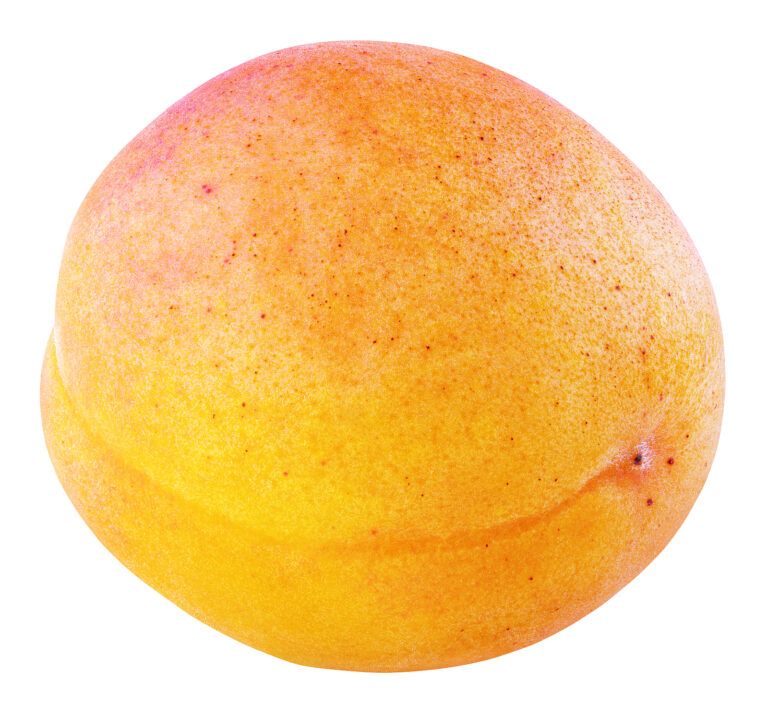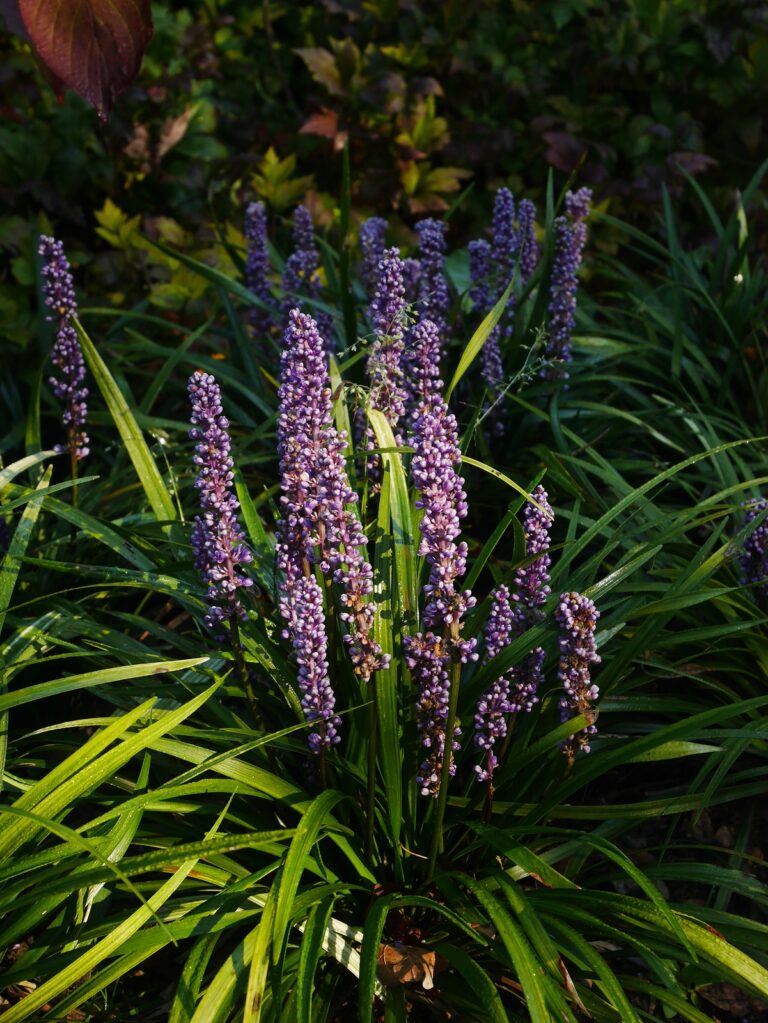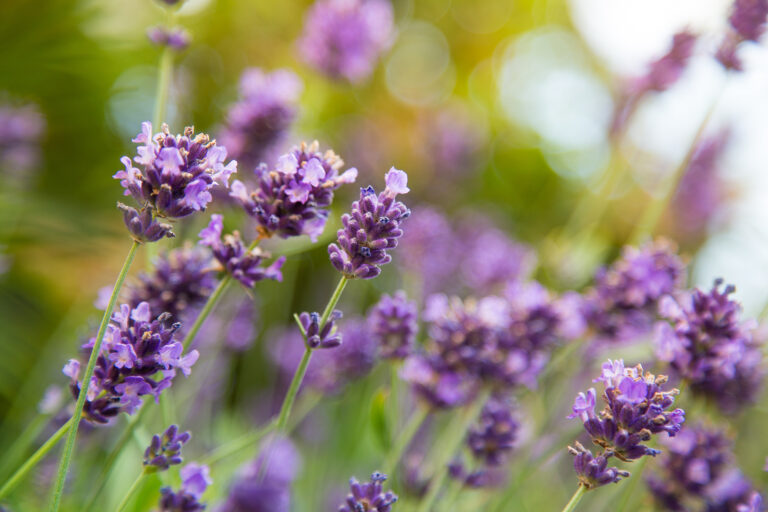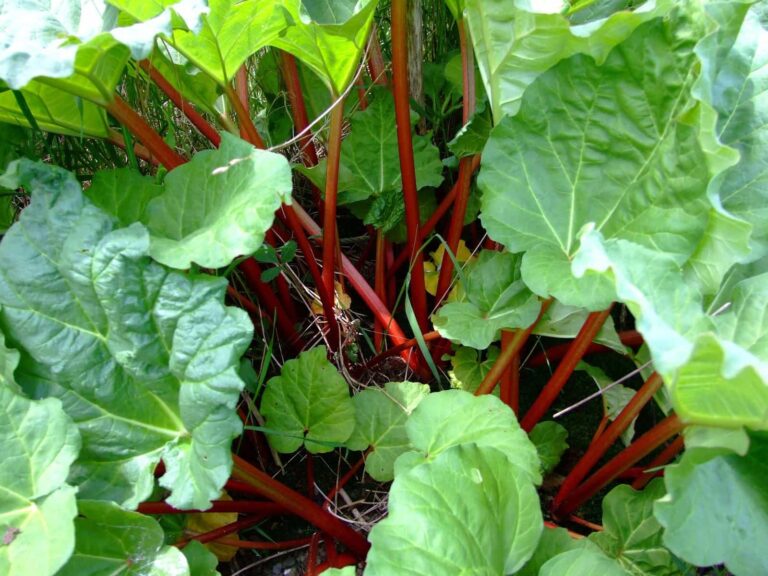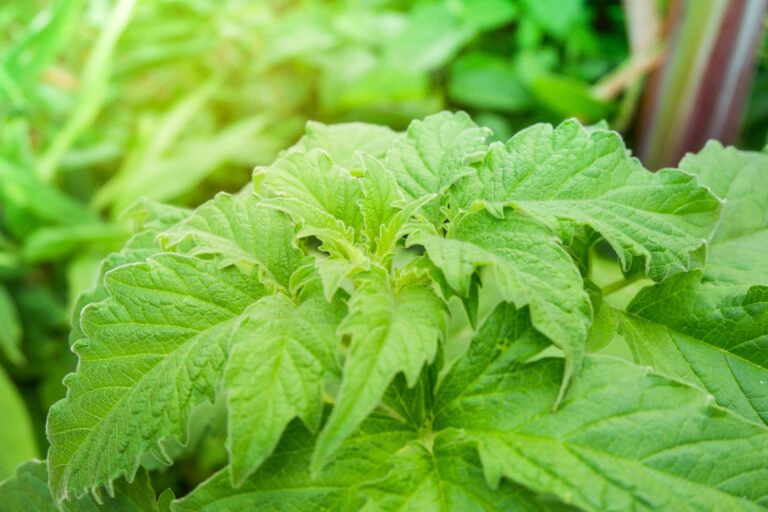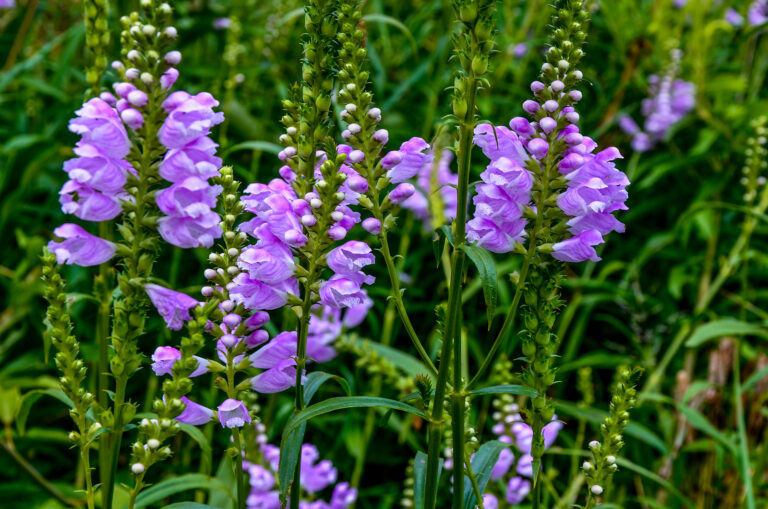How to Plant, Grow, Prune, and Harvest Grapes
Growing backyard grapes is not difficult, but success depends upon choosing the right variety for your climate, training the vine, and pruning regularly.
Grapes require a cold spell during the winter (but not a killing freeze), warmth in spring for flowering and fruit set, and heat and sunshine in summer to ripen the fruit.
Dessert grapes and wine grapes are not difficult to grow in the home garden. Grapes grow well in most regions.
Related article:
The most commonly grown grapes fall into two categories American grapes and European grapes. American grapes are most hardy; they will grow in regions where winter temperatures fall to 0°F (-18°C). European grapes are less hardy; they can survive without damage where winter temperatures drop to 10°F (-12°C). European grapes prefer a long, warm growing season—at least 170 frost-free days.
American and European hybrids (also called French-American hybrids) are resistant to fall and winter cold and require a long, warm growing season. They have the best qualities of both American and European varieties.
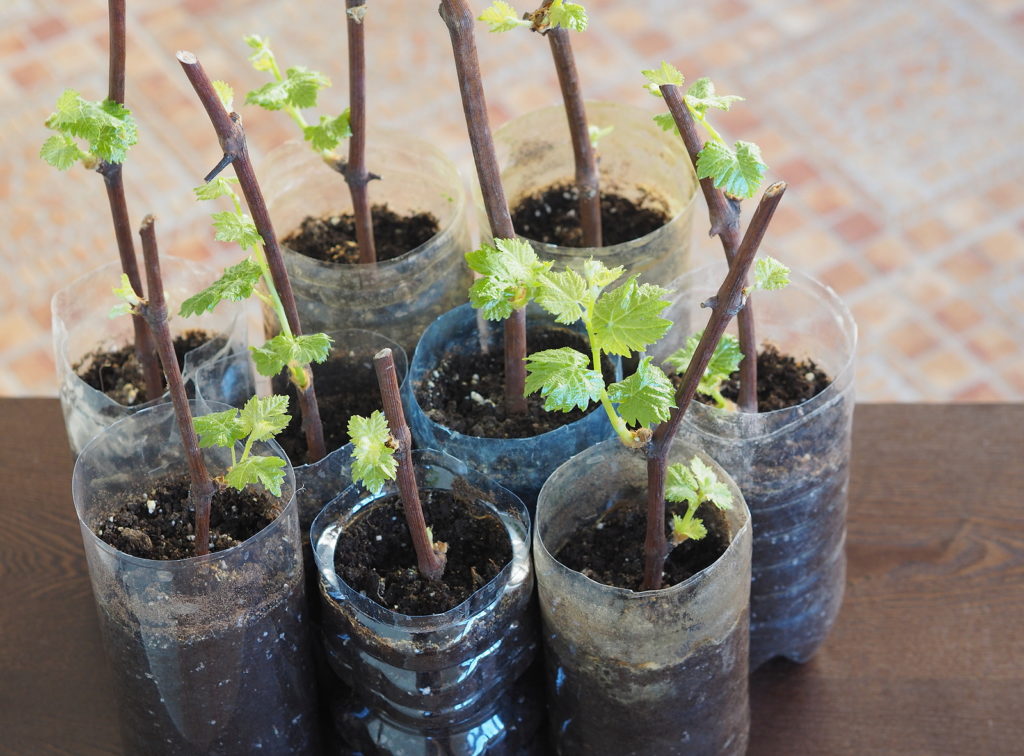
In warm, humid summer regions—such as the Southeast and South Central United States– Muscadine grapes are the best choice to grow. They thrive in the summer heat.
After selecting the right grape for your garden, growing and pruning grapes is not that difficult. For the most flavorful grapes and the best yield, you will want to spend a few hours in the first year or two training the vines and in subsequent years a few hours each season pruning the vines. The time investment for a good yield of flavorful grapes is minimal.
Grapes are woody, deciduous, perennial climbing plants with coiled tendrils, large, toothed leaves and clusters of inconspicuous flowers that develop into bunches of juicy berries. Vines can grow to 55 feet or more in length and have as many as 50 clusters of fruit on one vine. Grape clusters can contain from 6 to 300 grapes each.
The juicy pulp of the grape is covered with a skin that has a thin powdery coating called the “bloom.” Individual grapes can be seedless or contain between 1 and 4 seeds. Grapevines flower in spring and the fruit is ready for harvest about three months later.
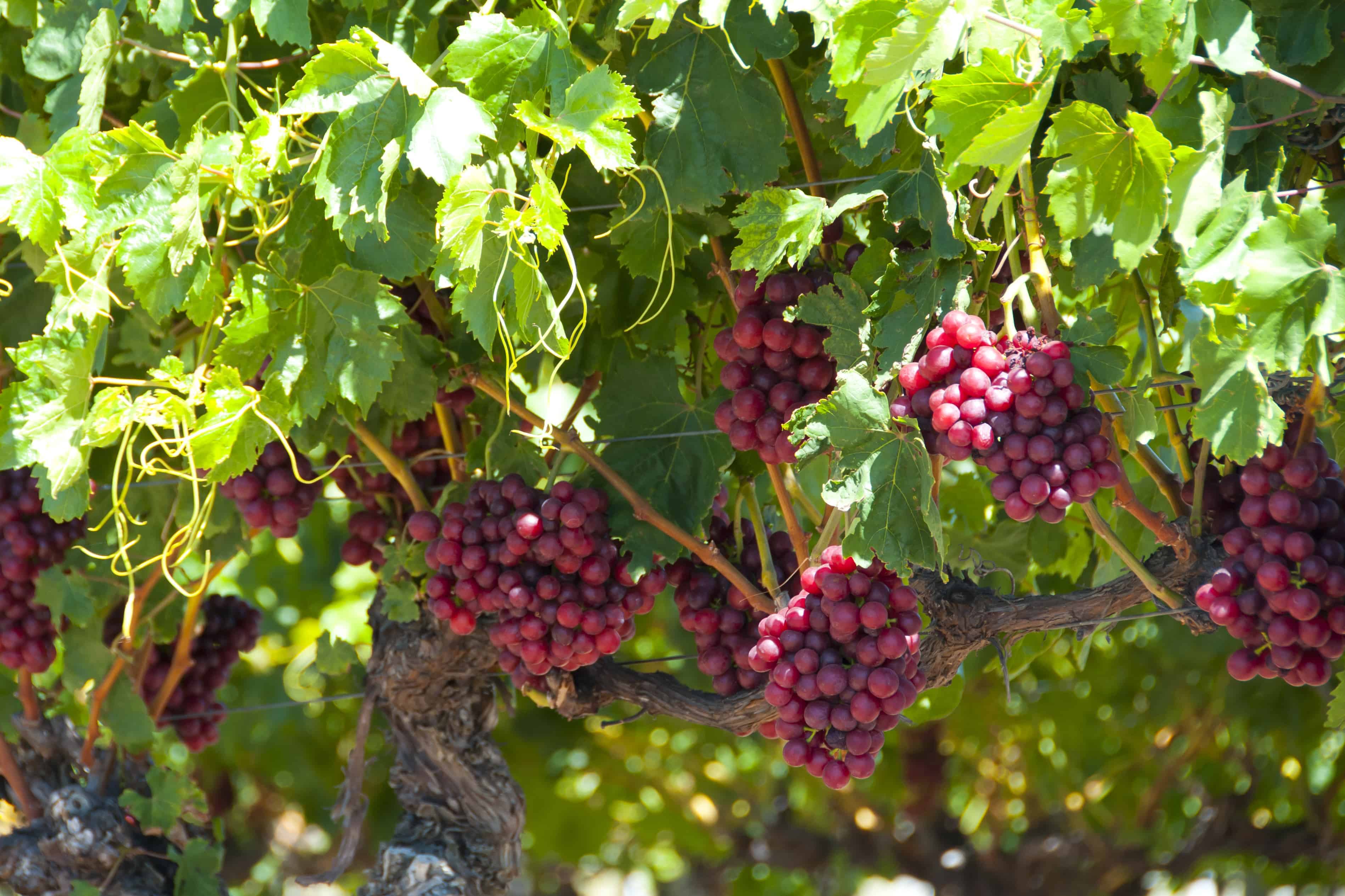
Types of grapes
Grapes can be broadly categorized as either table grapes or wine grapes, though many grapes can be used as both.
Table and wine grapes
Table grapes are eaten out of hand or used in baking and cooking. Wine grapes are used for making wine. Grapes can also be used for making raisins or for producing grape juice.
Grape color
After dividing grapes into table grapes and wine grapes, grapes can be further divided by color into white grapes and black grapes. White grapes—which are popularly called green grapes–include amber and yellow and green grapes, and black grapes—which are popularly called red grapes–include almost black, blue-purple, red, and pink-blushed grapes.
Seeded and seedless grapes
After division by color, grapes can, once again, be divided into seeded and seedless grapes.
North American and European grapes
There are two principal species in the grape family. One species is native to Europe and the other is native to North America.
The species Vitis vinifera is often called the European grape. European grapes—there are many subspecies–are characterized by tight skins and generally high heat requirements for ripening. European grapes are the most widely cultivated worldwide and produce the best grapes for winemaking as well as the most popular table grapes.
European grapes are believed to have originated in western Asia near the Caspian Sea and have been in cultivation for more than 7,000 years. These grapes were pictured in ancient Egyptian mosaics, Greek friezes, and Roman murals. There are thousands of varieties of European grapes. Two famous European table grapes are the ‘Thompson Seedless’ and the ‘Flame Seedless’. Famous European wine grapes are ‘Chardonnay’ and ‘Zinfandel’.
North American grapes fall mainly into the species Vitis labrusca. These grapes are known as American or North American grapes and are often called slip-skin grapes because their skins slip easily from the fruit pulp. These grapes require less heat than European grapes to ripen. Slip-skin grapes are often used to make jelly or unfermented grape juice. Slip-skin grapes are sometimes called ‘Concord’ type grapes and include the black Concord grape, the green Niagara grape, and the red Catawba grape.
The subspecies Vitis rotundifolia is another native North American grape. Vitis routundifolia grapes are often referred to as muscadine grapes. These grapes are tolerant of greater heat and are often grown in the South. Muscadine grapes produce only half a dozen large grapes per cluster and are usually black or coppery purple colored.
American grape varieties have a distinctive grapey flavor that is often referred to as foxy—which can also be characterized as musky or earthy. The foxiness of American grapes is contrasted with the sweet and winey flavor of European grapes. American grapes can be found in most temperate regions of the northern hemisphere. These are the grapes that the Norse explorers found when they first discovered North America in about 900 A.D. and called it Vineland.
In addition to the ancient stock of European and American grapes can be added to modern hybrid grapes, which are sometimes referred to as French hybrids. Hybrids are generally human-made plant combinations.
Modern hybrid grapes
Modern hybrid grapes varieties originated with the European grape, Vitis vinifera. The hybrids were developed beginning in 1865 after a grape root aphid called Phylloxera vastarrix devastated more than 2½ million acres of European grapes in France. Because American grapes were generally immune to phylloxera, European grape stems were grafted to American rootstock to create the modern hybrids. Hybrid grapes allowed Italy, France, and Spain to become the largest grape-producing countries in the world.
American grapes
American, or fox, grapes (Vitis labrusca) are good growers; they are for fresh eating or jelly. American grapes have soft flesh and a musty flavor and aroma; the pulp slides easily out of the skin. American grapes require less heat than European grapes and are cold tolerant below 0°F (-18°C). These are slipskin grapes of the Concord type. These grapes are used for jelly and unfermented grape juice and some sweet wines. These grapes grow throughout much of the United States but do not do well in the more humid Deep South. These grapes are mostly native to America (Vitis labrusca).
European grapes
European wine grapes also called Vinifera grapes (Vitis vinifera) are used for making wine, fresh eating, and drying. They are less hardy than American grapes. European grapes have a mild flavor; the fruit is firm and the skin does not slip off the flesh. European grapes are more susceptible to disease than other types. European grapes require high heat to ripen and are cold tolerant to about 0°F (-18°C). European grapes include table grapes such as Thompson Seedless and wine grapes such as Cabernet, Chardonnay, and Pinot Noir. These grapes are grown primarily in California but are also grown in the Northwest, Texas, tidewater Virginia, coastal Maryland, and eastern Long Island.
Hybrid grapes
French and American hybrid grapes have the best qualities of American and European grapes. They are vigorous growers; they are resistant to winter cold and require a long, warm growing season. They have the strong flavor and aroma of American grapes and they have the firmer flesh and non-slip skin of European grapes.
Muscadine grapes
Muscadine grapes (Vitis roundifolia) are also American grapes. They are tolerant of greater heat and are often grown in the South. Muscadine grapes produce only half a dozen large grapes per cluster and are usually black or coppery purple colored. Muscadine grapes thrive in hot, dry regions; they can be eaten fresh or made in jelly, juice, or wine. These grapes turn bronze, dark purple, or black when ripe.

Choosing grapes plants
- Plant 1-year-old plants that are virus-indexed and certified disease-free. A one-year-old plant will be about 14 inches tall.
- American and hybrid types can be grown from cuttings on their own roots.
- European grapes should be grafted to phylloxera-resistant rootstocks. (Phylloxera is a sap-sucking insect related to the aphid feeding on the roots and leaves of grapevines.)
- Choose cultivars that are resistant to grape diseases in your area. Contact the nearby Cooperative Extension Service for recommendations.
- For home growing, choose a cultivar that is self-fertile. (Most grapes are self-fertile, but a few muscadine grapes require a cross-pollinator.)
Best climate growing grapes
- Grapes are hardy from Zone 4 to 10; choose a cultivar that grows well in your region.
- American grapes are hardy from Zones 4 to 7; they are not hardy in regions where the winter temperature drops below -10° They grow best where there are at least 165 to 180 frost-free days.
- European, Vinifera, grapes grow best in arid climates. They are hardy from Zone 7 to 10. They grow best when there are 170 or more frost-free days each year.
- French-American hybrids are widely adaptable.
- Muscadine grapes grow from Zones 7 to 9. They can withstand high heat and humidity and are mostly disease resistant.
Where to plant grapes
Grapes want sun. Choose a south-, southwest-, or southeast-facing spot protected from wind and frost pockets. If you plant more than one vine, orient the row north to south. If you live where summer doesn’t get hot, plant the vine against a south-facing wall or fence so the plant can soak up reflected heat.
Grapes can tolerate most soils; their roots are very deep growing. Avoid poorly drained or waterlogged soil. A pH range of 6.0 to 7.5 is best.
- Plant all grapes in full sun with good air circulation.
- Grapes grow best in light, loamy soil rich in organic matter. However, grapes can also grow well in rocky, flinty, or chalky soil. Grapes that grow in lighter soil (not loamy) commonly mature sooner and have higher sugar levels.
- Choose a planting site with deep (9 to 12 inches or more) of well-drained soil.
- Grapes grow best in slightly acid to neutral soil with a pH of 5.5 to 5.7. The quality of the soil can affect the flavor and sugar content of the grape.
- Avoid planting in low spots where chilly air can settle.
- Do not plant near wild grapes that can harbor disease.

Grape pollination
- Most grape cultivars are self-pollinating and self-fruitful. Some Muscadine varieties require cross-pollination.
When to plant grapes
Plant grapes in late winter or early spring. Prepare the ground for the fall before planting. Bare-root grapes are best planted in early spring before the buds on the dormant vines begin to swell. Container-grown grapes can be planted just about any time during the growing season, but spring after the last frost is best. In mild-winter regions, grapes can be planted from fall through spring.
How to plant grapes
Plant grapes in holes amended with agree compost and manure. Plant the stems of bare-root grapes deep with only the top bud above soil level. Space 8 to 10 feet apart. Put a post or other support in place at planting time. Once established, grapes are aggressive growers so posts and cordons or an arbor should be in place at planting time or soon after.
- Dig holes 1 foot in diameter, wide enough to spread out the roots.
- Plant grafted grape plants so that the graft union is 2 inches above ground level.
- Plant non-grafted grapes at the same level they were growing in the container; the lowest bud on the trunk should be even with the soil surface.
- Firm the soil around the roots so that no air pockets are near the roots; douse the hole with water to wash soil tight around the roots; then fill the hole.
- Let grapes grow untrained a year after planting; this will allow roots to develop. Pinch off flowers during the first year.
- Start training grapes to supports the second spring after planting.
Spacing grapes
- Set up a vine support system before planting. See the Training section below.
- Space American and European type grapes 8 feet apart beneath the support; space rows 5 feet apart.
- Space Muscadine grapes 20 feet apart with 12 feet between rows.
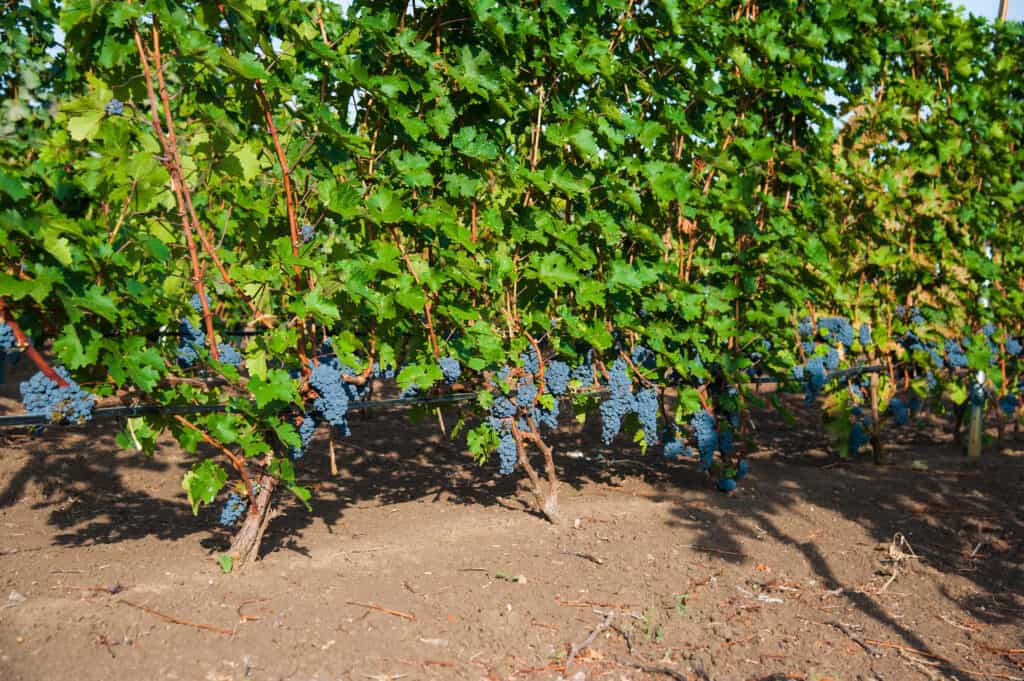
Training grapes to a wire trellis
- The simplest support method for backyard grapes is called the two-arm or four-arm Kniffen system which is essentially a wire trellis. Set two sturdy posts 20 feet apart then string two parallel wires between the posts at 36 inches and 60 inches above the ground (this is the four-arm Kniffen); for hybrid varieties use three wires (six arms) at 30 inches, 48 inches, and 66 inches. Plant young grapes under the wire at the recommended spacing (see above).
- Begin training plants the second year after planting. In late winter, cut the vine back to a stump with two buds. When the buds start growing, train the strongest of the two shoots up on a wooden stake to form a trunk; remove the weaker shoot.
- When the trunk reaches the lower wire, choose a side shoot to creep in each direction on the wire. Tie the shoots to the wire with elastic horticultural tape; as the canes grow spiral them around the wire. These trained canes are called “arms”.
- When the trunk reaches the second wire choose two more side shoots and tie them to the wire.
- Remove the growing tip of the trunk when it is about 6 inches below the top wire and choose two more shoots to tie into the top wire.
- This training will create a tall main trunk with sets of selective side shoots which is important for growing the best quality grapes. See Pruning below for more on this.
- There are other grape training methods (head pruning, fan pruning–also called cane pruning, cordon pruning); they are variations of the training described here. Head pruning is often used for European vinifera grapes: the trunk is trained to about 5 feet high then a ring of arms radiates like an umbrella from the top; fruiting spurs grow from the arms.
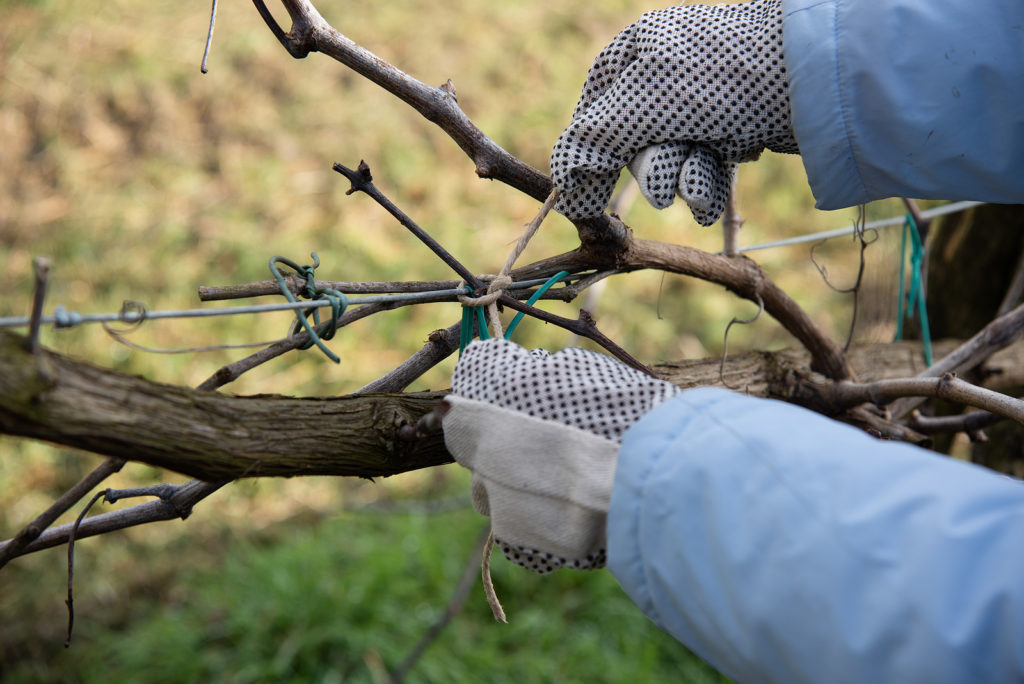
Pruning grapes
- Pruning grapes once a year or more often is important, otherwise, the grapes are borne farther and farther from the main trunk on the ends of very long canes; when canes are long nutrients from the roots must travel farther and farther and the quality of the grapes will decline. Pruning is important to keep the grape clusters near the main trunk.
- Prune in spring when the vines are dormant.
- Each spring prune away unwanted shoots growing off the trunk or roots.
- To insure against shoot damage in the future, leave a short two-bud spur near the base of the trunk and beside each of the lateral arms. If lateral stems are lost, the spurs can grow new laterals.
- On the main lateral arms running along the wires, thin away side branches so they are spaced one every 4 inches; trim these side branches so that there are 8 to 15 buds on each.
- The fruit is always borne on the new woody growth or side branches of the present season; grapes do not bear fruit on wood from previous seasons. Pruning as described above will ensure the best production potential.
- The fruit grows best on a hard cane about the size of a man’s small finger.
- With training and pruning, a vine can carry about 25 buds by the third year.
Pruning grapes year-by-year
Pruning for fruit production: The reason to prune grapes is to limit the amount of fruit-producing wood; this ensures that the vine does not produce too much fruit; fruit quality declines as vines become overloaded with fruit. Always prune grapes in the dormant season—winter or early spring, before the buds swell.
First-year
First-year in the garden: Let vines grow unimpeded during the summer in the garden. Don’t train the vines; let them grow close to the ground and spread. The more leaves the better root development. The first winter in the garden, chose the sturdiest shoot to become the trunk of the vine. Use elastic garden tape to secure the shoot to a post then prune the trunk to 3 or 4 lowest buds.
Second-year
Second year in the garden: In the spring of the second year, choose one of the new shoots growing from “trunk” stem to become the upper trunk of the vine. Tie this stem loosely into the post and then remove all of the other stems. Later in the summer, top this upper trunk so that it develops two lateral stems or arms. Tie these arms into the wire cordon or arbor and pinch away any new lateral shoots or train the arms to an arbor. At the start of the second winter trim away any new growth that is not part of the trunk or arms.
Third-year
Third year in the garden: Let the arms of the vine grow along the cordon or arbor. Trim away any side shoots that appear on the trunk. During the winter the vine will either be cane pruned or spur pruned (check the variety to know which type of pruning).
Following years
Each winter after the third year either cane prune or spur prune (check the variety to know which type of pruning): Cane pruning: cut back each arm to 12 buds and tie to support; these buds will develop fruit the next summer; also choose 2 strong lateral shoots near the trunk and cut these back to 2 buds; these will grow to become renewal shoots or fruiting canes the summer after next; each winter remove the arms that have just fruited allowing the renewal shoots to grow on in spring; repeat this each winter. Spur pruning: remove weak shoots from the arms leaving strong shoots spaced 6-10 inches apart; cut each shoot back to 2 buds; each spur will produce 2 fruit-bearing stems the following season; every winter remove the lower shoot on each spur and cut the upper stem to 2 buds–these will develop into stems and bear fruit the next summer; repeat this each winter.
Thinning grapes
- If vines set a heavy crop, thin out some clusters while the fruits are still small and hard. Remove the weakest clusters first; remove some fruits from heavy fruited clusters to allow for air circulation. Space clusters so that each gets maximum sunlight and air circulation.
- Pinch or cut off leaves around ripening clusters in mid-summer to increase air circulation and sunlight to each cluster.
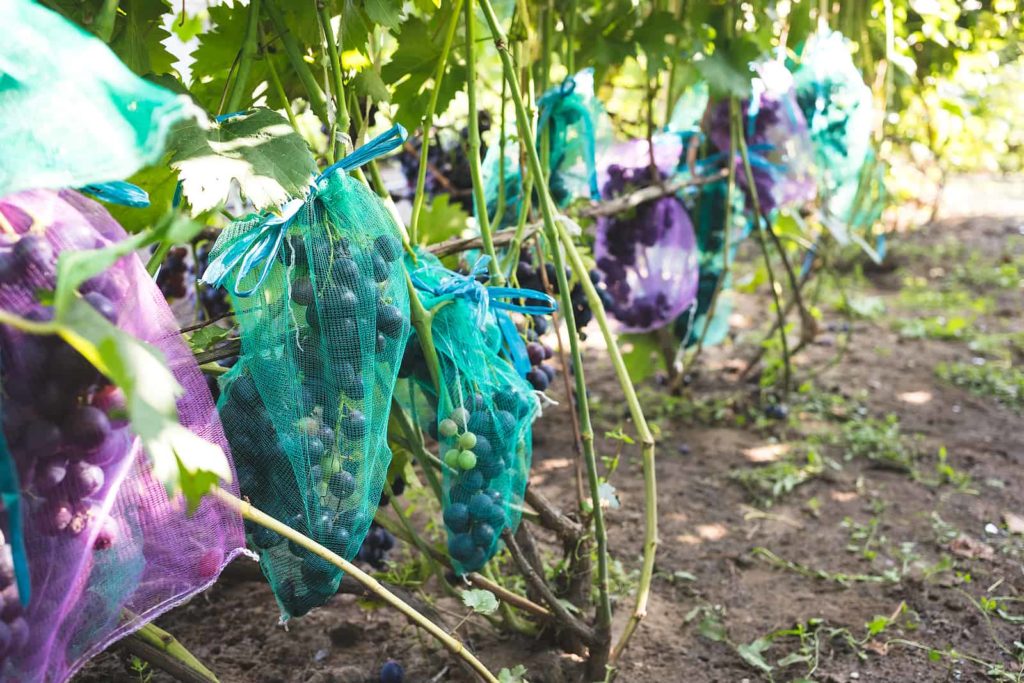
Grape care, feeding, and watering
Water vines regularly throughout spring and summer. Keep water off the leaves. Feed grapes a dilute potassium-rich fertilizer such as fish emulsion. Feed and mulch vines with aged compost.
- Keep the soil evenly moist around grape plants during the first year; in subsequent years plants can be sustained by deep, occasional watering. Be sure to water in spring when shoots are developing and during midsummer droughts. Also, water whenever canes become droopy.
- Feed grapes with aged compost, aged cow manure, or commercial organic mix in spring. Feeding plants after midseason can cause rapid growth, and low-quality fruit, and leave plants susceptible to frost damage in autumn.
- Muscadine grapes will benefit from a nitrogen-rich fertilizer in spring, such as alfalfa meal.
- Mulch under vines to control weeds. Mulch around trunks in autumn to protect roots from the winter cold. Rake back the mulch in spring when you add aged compost or manure.
- In very cold winter regions, put windbreaks in place to protect vines from cold winds or put plastic tents over vines.
Propagating grapes
- American and European grapes can be propagated by cuttings and grafting.
- Muscadine grapes can be propagated by layering.
- To propagate by cutting choose a mature wood cutting about the size of a pencil. Let the cut tips form a callous over the winter; once the callous forms set each cutting in soil with the growing tip up. Rooted cuttings can be planted in the garden the second spring after cutting.
- To propagate by layering, bend a vigorous cane to the ground and cover it with soil leaving three tips buds exposed. Roots will grow from nodes along the cane in a few months; new plants can be cut from the mother plant and replanted.
- European vinifera canes are commonly grafted to the disease-resistant rootstock. The best time to start a graft is in late winter when the canes (called “scions”) are dormant.
Harvesting grapes
Leaves grapes on the vine until they are fully ripe. Ripening can come several weeks after the fruit reaches full color, so taste the fruit to know when it is ready for harvest. If the grapes fail to sweeten, you have probably planted the wrong variety for your region or the vine is not in a warm enough spot.
- Harvest grapes when they are full-colored and sweet flavored usually from late summer to mid-fall depending on the variety. When grapes are ripe the stem will brown and slightly shrivel
- American and European grapes in a bunch commonly ripen at the same time.
- Harvest muscadine grapes individually as they ripen.
- Use a sharp knife or pruner to cut the bunch away from the vine. Handle the bunches carefully; try to preserve as much of the powdery bloom on the berries as possible. Be careful not to stack or crush bunches; use shallow 4-quart baskets.
- Harvest during the coolest part of the day if you plan to store or refrigerate the grapes.
- Grapes do not continue to ripen after picking.
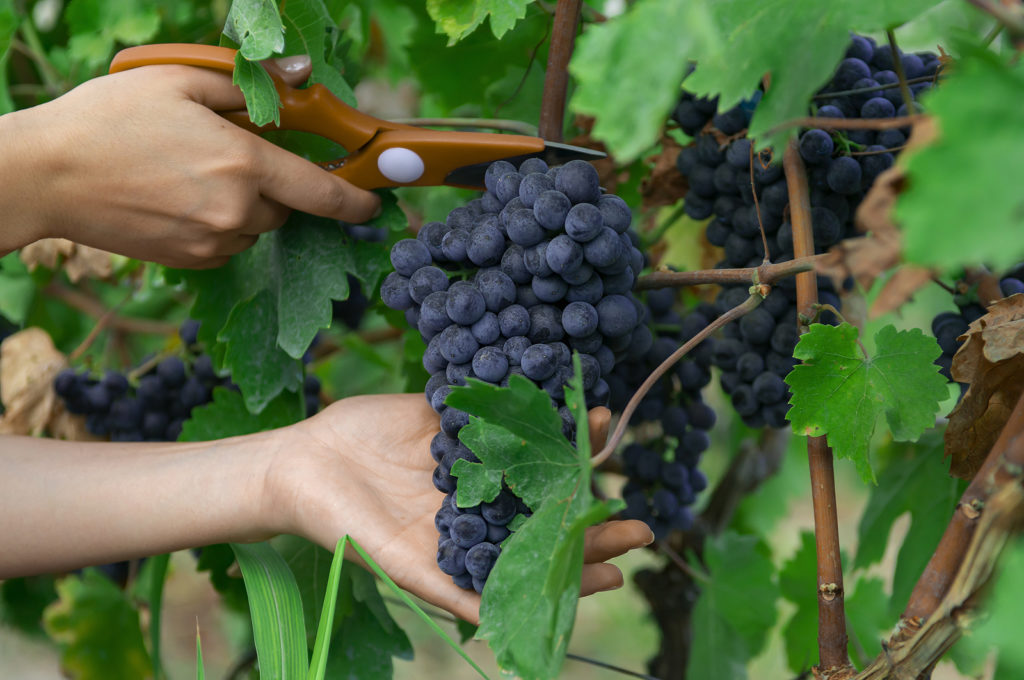
Storing grapes
- Store grapes not refrigerated in a cool place at 40 to 50°F; for long storage place bunches in trays in single layers.
- American and European grape types will store in the refrigerator for about 4 weeks.
- Muscadine grapes will store in the refrigerator for one to two weeks.
- Grapes not used fresh can be frozen, dried, canned, or made into juice or wine.
- Grapes for wine are usually harvested all at one time and at various degrees of ripeness
- Grapes for jelly and jam are usually picked early so that bunches contain some underripe berries that are full of pectin which will prevent crystals from forming in the processed jelly.
- Grapes for juice should be harvested at full maturity and ripeness.
Grapes in the kitchen
Choosing
Select table grapes that are fresh, plump, and bright. “Bloom” is the velvety powdery look that you see on fresh grapes. That’s good! Grapes that are too shiny have probably been handled just a bit too much.
Fresh-harvested grapes will have stems that are green and firm. These grapes will be the most flavorful. If the stems have turned brown or black, the grapes have begun to age.
Serving
The flavor of fresh grapes eaten out of hand is difficult to beat. But, if snacking is not enough, table grapes easily combine with other fruits: try grapes in fruit cups, fruit salads, and fruit compotes.
Combine grapes with avocado, grapefruit sections, melon balls, or strawberries.
Grape diseases
- Plant cultivars that resist diseases common in your area. Check with the nearby Cooperative Extension Service for recommendations.
- Black rot is a fungal disease that causes reddish-brown leaf spots and fruit to become hard, shriveled, and mummified. Remove and destroy mummies and diseased leaves and clean up debris below the vines. Spray plants with a copper fungicide in spring before buds begin to turn green. Spray every 14 days; do not spray when the temperature is greater than 80°
- Botrytis bunch rot is a fungal disease that will cause fruits to be coated with fluffy gray-brown fungal spores. Destroy infected fruit. Plant disease-resistant and disease-tolerant cultivars. Thin crowded fruit clusters to ensure good air circulation around fruits.
- Anthracnose is a fungal disease that causes sunken, dark-ringed spots on leaves and fruit. Remove and destroy infected leaves and fruit. To prevent anthracnose spray with lime sulfur in spring when buds swell.
- Powdery mildew is a fungal disease that produces a white powdery coating on the upper surfaces of leaves and leaves fruit discolored as well. Leaves may turn brown and drop early and dark patches may appear on the trunk and branching stems. Prevent a reoccurrence by spraying with lime sulfur as buds swell in spring.
- Downy mildew is a fungal disease that causes a cottony white growth on the undersides of leaves; leaves may have brown spots and drop early. Some fruits may become hard and discolored. Remove and destroy infected leaves and fruit. Prevent downy mildew by spraying plants with lime sulfur when buds swell in spring.
Grape pests
- Grape berry moth caterpillars chew holes in leaves and fruit; they leave webbing on fruit as well. The adult is a grayish-purple moth. Hang grape berry moth pheromone traps among the vines to catch and kill the moths. Spray plants with Bacillus thuringiensis to kill caterpillars.
- Birds will eat ripening fruit. Exclude birds by draping bird netting over vines.
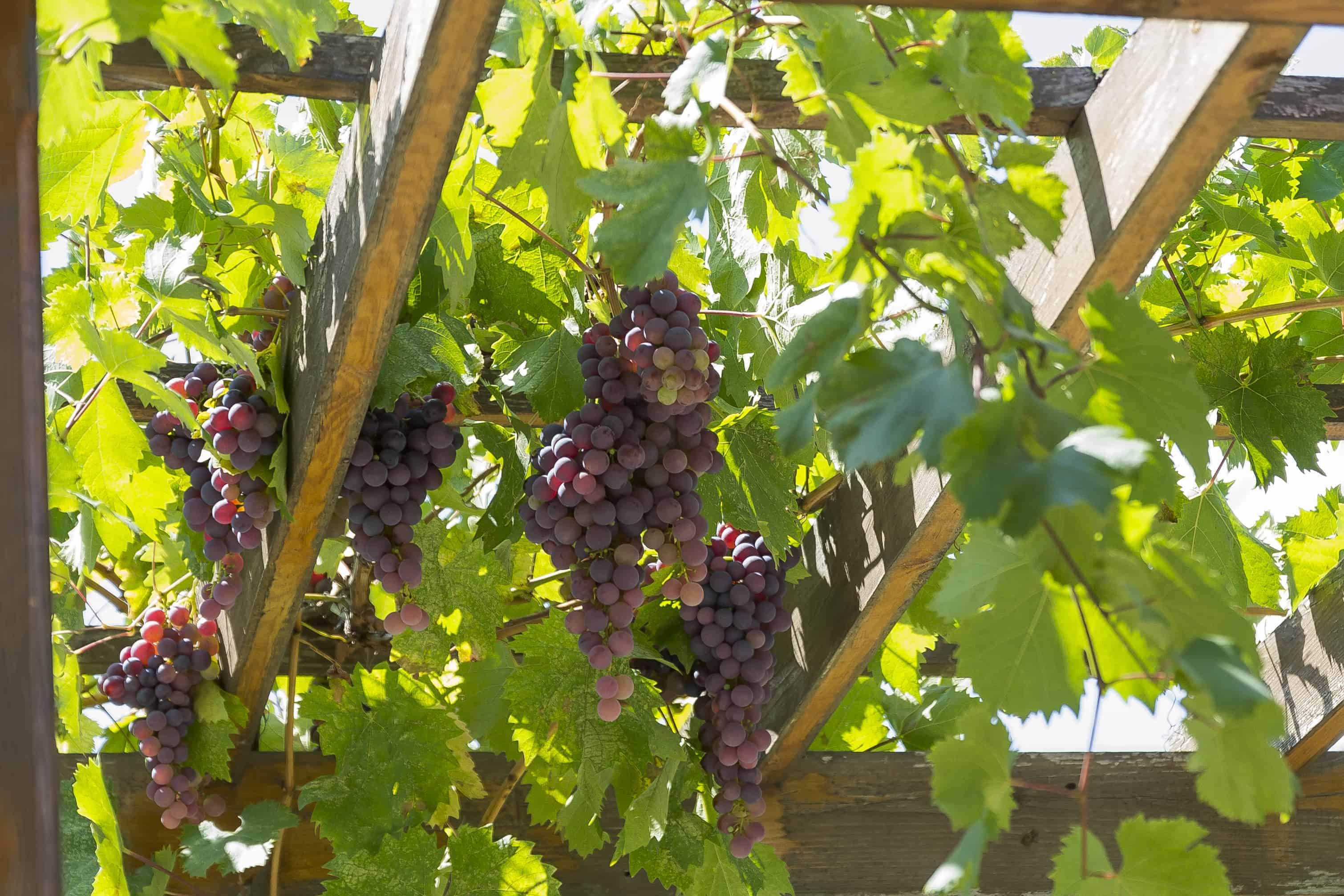
Grape varieties to grow
- Grapes for fresh eating and dessert (these will also appear among the grapes categories below): ‘Buckland Sweetwater’, ‘Dornfelder’, ‘Brandt’, ‘Flame’, ‘Lakemont’, ‘Perlette’, ‘Muscadine’, ‘Concord’, ‘Canadice’, ‘Interlaken’, ‘Himrod’, Muscadine grapes, Regent.
- American and American hybrids: ‘Beta’, ‘Blue Jay’, ‘Buffalo’, ‘Caco’, ‘Campbell Early’,Catawba’, ‘Concord’, ‘Delaware’, ‘Fredonia’, ‘Golden Muscat’, ‘Moore Early’, ‘Niabell’, ‘Niagra’, ‘Senaca’, ‘Sheridan’, ‘Steuben’, ‘Van Buren’, ‘Worden’.
- American seedless: ‘Canadice’, ‘Concord Seedless’, ‘Glenora’, ‘Himrod’, ‘Interlaken’, ‘Lakemont’, ‘Romulus’, ‘Suffolk Red’.
- European-Vinifera: ‘Black Monukka’, ‘Blackrose’, ‘Cardinal’, ‘Csaba’, ‘Emperor’, ‘Flame Seedless’, ‘Flame Tokay’, ‘Italian Muscat’, ‘Muscat of Alexandria’, ‘Olivette Blanche’, ‘Perlette’, ‘Red Malaga’, ‘Ribier’, ‘Rish Baba’, ‘Ruby Seedless’, ‘Thompson Seedless’, ‘Cabernet Sauvignon’, ‘Chardonnay’, ‘Merlot’, ‘Pinot Noir’, ‘Riesling’ , ‘Sauvignon Blanc’.
- French hybrids: ‘Aurora’, ‘Baco Noir’, ‘Cascade’, ‘Chelois’, ‘DeChaunac’, ‘Foch’, ‘Seyval Blanc’, ‘Swenson Red’, ‘Veeblanc’, ‘Villard Blanc’.
- Muscadine: ‘Creek’, ‘Dulcet’, ‘Higgins’, ‘Hunt’, Magoon’, ‘Scuppernong’, ‘Tarheel’, ‘Topsail’, ‘Yuga’.
Grape varieties for backyard growing
Mild summer region grape varieties
- Bluebell: American; seed blue grapes; for juice and fresh eating; ripens early; excellent in cold winter regions; cane or spur prune.
- Buffalo: American; seeded black grape; spicy flavor; for fresh eating or juice; ripens midseason; cane or spur prune.
- Canadice: American; seedless red fruit; for fresh eating or juice; ripens early in cool regions; spur prune.
- Himrod: American hybrid; seedless white fruit; spicy flavor; hardy in cold winters; ripens very early; cane prune.
- Interlaken: American hybrid; seedless green or yellow; fruity flavor; for fresh eating; ripens early; matures in cool regions; cane or spur prune.
- Price: American; seeded blue grape; sweet flavor; for fresh eating, wine, jelly, juice; hardy in cold regions; ripens early; spur prune.
- Seneca for fresh eating; ripens midseason; cane prune.
- Schuyler for fresh eating; ripens midseason; spur or cane prune.
- Valiant: American; seeded blue fruit; for juice and jelly; very cold hardy; ripens early; cane prune.
- Van Buren for juice; ripens early.
Warm summer region grape varieties
- Cardinal for fresh eating; ripens very early; spur prune.
- Concord; American; seeded blue fruit; for fresh eating, cooking, jelly, juice; ripens midseason; cane or spur prune.
- Delight: European; seedless dark green yellowish grape; for fresh eating and raisins; ripens early; spur prune.
- Niabell: American; seeded black grape for fresh eating; ripens midseason; cane or spur prune.
- Niagra: American; seedless green to pale yellow fruit; for fresh eating, wine, jam, juice; ripens midseason; cane prune.
- Perlette: European; seedless pale yellow; for fresh eating; ripens early; spur prune.
Hot summer region grape varieties
- Cardinal for fresh eating; ripens very early; spur prune.
- Crimson Seedless: European; seedless red fruit; for fresh eating, raisins; ripens late; cane prune.
- Delight: European; seedless dark green yellowish grape; for fresh eating and raisins; ripens early; spur prune.
- Early Muscat: European; seeded green fruit; use for muscat wine; ripens early midseason; spur prune.
- Emperor for wine; ripens late; cane prune.
- Flame: European; seedless red grape; for fresh eating, raisins; ripens early midseason; cane or spur prune.
- Muscat of Alexandria; European; seeded green or amber fruit; for wine; ripens late midseason; spur prune.
- Niabell: American; seeded black grape for fresh eating; ripens midseason; cane or spur prune..
- Perlette: European; seedless pale yellow; for fresh eating; ripens early; spur prune.
- Red Malaga for fresh eating and wine; ripens early midseason; spur prune.
- Ribier: European; seed black fruit; mild flavor; for fresh eating and wine; ripens early midseason; spur prune.
- Ruby Seedless: European; seedless red to red-black fruit; dessert grape; ripens late midseason; cane or spur prune.
- Scarlet seedless for fresh eating; ripens midseason; cane prune.
- Thompson Seedless: European; small seedless amber fruit; for fresh eating and raisins; does best in hot dry regions; cane prune.
- Tokay for fresh eating; ripens late midseason; spur prune.
Table grape varieties
Here are some of the best-known table grape varieties you are likely to find at your farm market:
- Almeria: green-skinned, small-seeded, medium-large fruit with firm, juicy flesh, and tangy sweetness. Ripens late midseason, fall through mid-winter.
- Autumn Royal: blue-skinned, seedless, medium to large oval fruit with a crisp, sweet-tasting flesh. Ripens late mid-season, fall through early winter.
- Baresana: white, seeded, large, round-oval fruit with juicy, sweet flesh. Ripens mid-season.
- Beauty Seedless: blue-skinned, seedless, small to medium-sized, oval fruit with firm flesh and spicy flavor. Ripens early, mid-spring to summer.
- Black Corinth: purple-black, seedless, very small fruit that is crunchy and very sweet. Also known as Zante currant or champagne grape. (Zante is the name of the Greek island where these grapes were cultivated 2,000 years ago.) Ripens mid-season in summer.
- Calmeria: green-skinned, seeded, large, elongated oval fruit with meaty, crisp flesh that is rich and tangy-sweet. Ripens late, late fall to mid-winter.
- Cardinal: red-skinned, seedless, large fruit that is round to elongate with a firm, crisp fruit with a Muscat-like flavor. Ripens early, late spring to mid-summer.
- Candice: red-skinned, seedless, small, oval fruit with juicy flesh and mild red grapey flavor. Ripens mid-season.
- Catawba: red-skinned, seeded, medium-sized, roundish fruit with sweet and rich juicy flesh. Ripens late summer through fall.
- Chasselas: red-skinned, seedless, plump, juicy fruit.
- Christmas Rose: dark red, seeded, large, oval fruit that is very crunchy with a juicy, sweet fruity flavor. Ripens late midseason, late summer to mid-winter.
- Concord: purple-black skinned medium to large, round fruit with juicy flesh, sweet near the skin and tar near the seeds. Use for dessert, juice, and jelly. Some varieties are seedless. Ripens mid-season.
- Delaware: red-skinned, seeded, small to medium-sized roundish fruit with sweet, juicy flesh. Ripens midseason, late summer through fall.
- Emperor: red-skinned, seeded, large, oval fruit with firm, crisp flesh with a mild cherry taste. Ripens midseason to late, late fall to early spring.
- Fantasy Seedless: blue-black skinned, seedless, large oval fruit that is firm and very sweet. Ripens mid-season.
- Flame Seedless: red-skinned, seedless, small to medium-sized, round fruit with a crunchy bite and mild sweetness. Ripens early to mid-season, early summer through fall.
- Flame Tokay: red-skinned, seedless, large to very large, oblong fruit with crisp, juicy, sweet flesh. Ripens midseason, early fall through late fall.
- Italia Muscat: yellow green-skinned, seeded, very large fruit with tender juicy flesh with a heavy, sweet muscat flavor. Ripens midseason, late summer through late fall.
- Kishmishi: same as Thompson Seedless.
- Red Malaga: red-skinned, seeded, large fruit with crisp flesh and sweet flavor, and low acidity. Ripens early mid-season.
- Marroo Seedless: blue-black, seedless, medium-sized fruit with firm, juicy flesh and sweet, mellow flavor. Ripens mid-season.
- Niabell: blue-skinned, seeded, very large round fruit that is sweet to semi-sweet. Slip-skin Concord type. Ripens mid-season.
- Niagra: green-skinned, seeded, medium to large oval fruit; the flesh is juicy, foxy, and sweet. Ripens mid-season.
- Perlette: green-skinned, seedless, medium-sized round fruit with firm, juicy, sweet flesh. Use for desserts or raisins. Ripens very early, late spring through mid-summer.
- Queen: red-skinned, seeded, large fruit with firm, juicy flesh, and very mild sweetness. Ripens in midseason, late summer.
- Red Globe: red-skinned, seeded, very large, round fruit with firm flesh with a mild, sweet flavor. Ripens mid-season, fall to mid-winter.
- Red Malaga: red-skinned, seeded, large, oval fruit with crisp, firm flesh and neutral flavor. Ripens in early midseason, mid-summer through early fall.
- Ribier: purple-blue skinned, seeded, large to very large, plump, round fruit with sweet juicy flesh with mildly astringent skin. Ripens mid-season.
- Ruby Seedless: red-skinned, seedless, medium-sized, oval fruit with firm, crisp, juicy flesh that is a sweet-tart taste. Ripens late mid-season, late summer to early winter.
- Steuben: blue-black-skinned medium-sized fruit with rich, tangy flavor. Ripens mid-season.
- Sugarone: green-skinned, seedless, large, elongated, plump fruit with firm, crisp flesh, and light, sweet flavor. Ripens early.
- Thompson Seedless also called Sultanina: green-skinned, seedless, small to medium elongated fruit that has a crisp, juicy flesh that is sweet. Also used for raisins. Ripens early to mid-season, summer through fall.
- Tudor Premium Red: red-skinned, seedless, large fruit with a sweet, crisp flavor. Ripens late mid-season, late summer through late fall.
Also of interest:
Related articles:
Planning the Home Fruit Garden
Garden Planning Books at Amazon:
- Vegetable Garden Almanac & Planner
- Kitchen Garden Grower’s Guide Vegetable Encyclopedia
- Vegetable Garden Grower’s Guide
- Tomato Grower’s Answer Book
More fruit-growing articles:
Learn how to plant, grow, prune, and harvest your favorite fruits. Click below for all you need to know.
- Apple
- Apricot
- Avocado
- Banana
- Blackberry
- Blueberry
- Cantaloupe
- Chayote
- Cherimoya
- Cherry
- Citrus
- Clementine
- Cranberry
- Currants
- Elderberry
- Feijoa
- Fig
- Gooseberry
- Grape
- Grapefruit
- Guava
- Kiwifruit
- Kumquat
- Lemon
- Lime
- Loquat
- Mandarin
- Mango
- Melon
- Mulberry
- Muskmelon
- Nectarine
- Olive
- Orange
- Papaya
- Passion Fruit
- Peach
- Pear
- Persimmon
- Pineapple
- Pineapple Guava
- Plantain
- Plum
- Pomegranate
- Pumpkin
- Quince
- Raspberry
- Strawberry
- Tangelo
- Tangerine
- Tangor
- Watermelon


